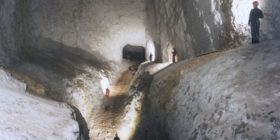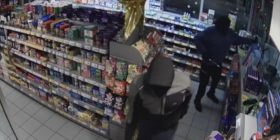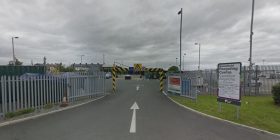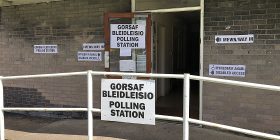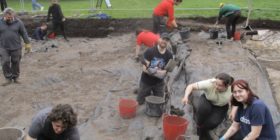North Wales Police are about to unleash their latest weapon in the fight against crime.

North Wales Police will begin using Unmanned Aerial Vehicle’s (UAV) or drones for policing operations such as missing person searches, firearms and public order incidents.
Up to 15 officers from North Wales Police will undertake drone training based on Civil Aviation Authority regulations.
The new drones will be equipped with high-definition cameras which have the ability to capture both still and video images.
Camera’s mounted on UAV’s have the ability to stream HD video via a downlink to officers on the ground giving them the ability see live aerial footage.
The UAV’s will also have thermal imaging capability which is a vital tool used by police helicopters at night when searching for missing people and criminals hiding from police, drones can also be used for capturing images from crime and vehicle collision scenes.
Tweeting about the roll out of police UAV’s in North Wales, Deputy Chief Constable Gareth Pritchard said;
NWP will develop the use of drones for policing operations and include thermal imaging capability. Deployment (will begin) in late Spring
Operational use will include search for missing persons, crime (and) collision scenes, public order, events, flooding & firearms operations
Drones provide good value for money and replace helicopter (s) in certain cases. 15 Officers (are to be) to be trained to ensure compliance to CAA Regs (Civil Aviation Authority regulations)
Surrey police are believed to have the UK’s largest ‘drone squadron’ they recently invested £250,000 in new UAV’s and has 38 trained members of staff who can fly UAVs.

This is what Kent Police say about their drone operations
The UAV will not replace our police helicopter.
We’ll use it for things a helicopter is not needed for, such as taking pictures of crime scenes and collisions; and when the helicopter is already being used for something else and it’s appropriate to use the UAV instead.
We’ll only use our UAV when there’s a genuine and legitimate need for it.
Here are some more examples of where we intend to use our UAV:
- To help us quickly search large areas for vulnerable missing people
- To help us manage critical incidents
- To locate suspects known to be hiding in a specific area
- To capture aerial images to help us with our emergency and events planning.
Our UAV policies set out; how we’ll use it, how we’ll reduce any intrusion into a person’s privacy and how we’ll secure the data we collect. We’ll follow the same processes currently used by our helicopter and officers using body worn videos.
- We’ll be open, transparent and overt in our use of UAV.
- It will only be operated by uniformed police officers authorised by the CAA.
- If we need to use private land, we’ll aim to seek the owner’s permission.
- We’ll publish how we’ve used the UAV (where we can, we’ll also include any direct results).
- Evidential images will be held on a secure server which only the investigating police officer(s) can access.
- Images not required will be deleted after 31 days.
- It will not be used to spy on anyone.
- It will not be used for general patrol.
We won’t be using our UAV at night as we do not currently have permission from the CAA.
We’ll only use it within the parameters set by the CAA, which is 500m from the person operating it, no higher than 400ft, and always within line of sight.
View the CAA UAV guidelines we adhere to.
Dronejacking is a thing!
The rise in the use of drones will likely lead to a wave of “dronejackings” by cybercriminals, warn security experts from Intel’s McAfee Labs.
As drones become a major tool for police forces as well as companies like Amazon who have started using UAV’s for home deliveries, it’s predicted criminals will begin to target drones by taking over control while in flight.
Intel’s Bruce Snell, said in McAfee Labs 2017 Threats Predictions report:
Spotted something? Got a story? Send a Facebook Message | A direct message on Twitter | Email: News@Deeside.comMore and more law enforcement agencies are turning to drones to assist in surveillance and crowd control.
In a highly charged situation like a protest or active shooter situation, a police drone would be a tempting target for someone looking to remain unseen by law enforcement.
This scene has played out countless times in action movies. The bad guys (or heroes) go through elaborate measures to take out the security feeds of their target.
Now, instead of wall-mounted security cameras, we have cameras attached to drones.
As protestors and hacktivists start to mix more, the odds of a protester with the technology to knock out surveillance drones dramatically increases.
Latest News


